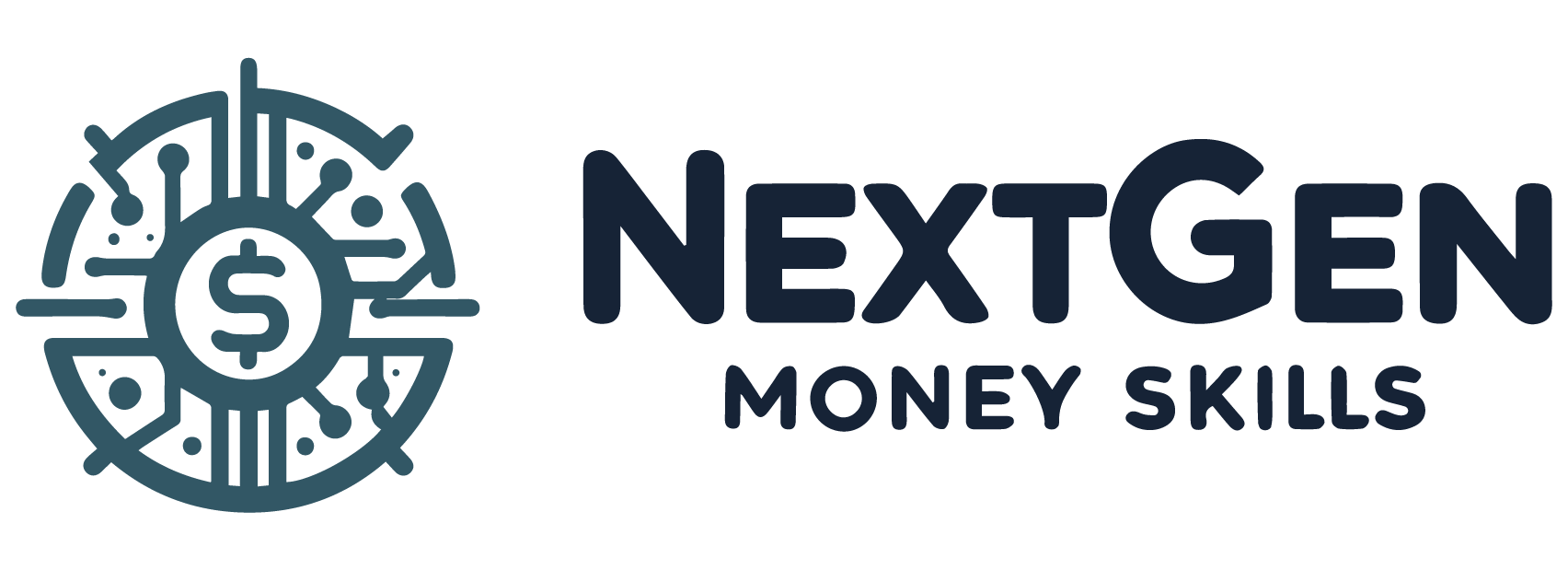Table of Contents
Many find themselves living paycheck-to-paycheck, struggling to break free from the cycle of financial stress. If this resonates with you, there’s a beacon of hope on the horizon. A proactive approach can help you get a month ahead on bills, offering peace of mind and a buffer against unexpected expenses. This guide walks through practical and achievable steps designed to set you on the path to financial security.
Getting ahead financially requires dedication, a clear plan, and the willingness to make necessary adjustments. It’s about more than just scraping by; it’s about creating a life where you’re not constantly worried about the next bill. The goal is to transition from a reactive to a proactive financial lifestyle, ensuring you have the funds to cover your expenses before they are due. Learn how to get a month ahead on bills in this guide.
Laying the Groundwork to Get Ahead
Before you can break free from living paycheck-to-paycheck, the groundwork must be laid. It’s about building a solid foundation from which you can grow your finances. This involves understanding your current financial state, identifying areas for improvement, and setting clear, achievable goals. The initial steps may seem challenging, but they are essential for getting ahead.
Understanding the Importance of Being a Month Ahead of Your Bills
Being a month ahead of your bills is a game-changer in managing personal finances. It means living off of last month’s income, creating a buffer that allows you to handle household items and unexpected costs without dipping into credit. With a month’s worth of bills covered, you can use gift cards, prime membership perks, and other benefits without the anxiety of overspending. A one-month-ahead savings plan simplifies paying your bills on time, as the money is already sitting in your checking accounts, ready to go. This approach not only helps you track your progress but also significantly reduces financial stress, contributing positively to your overall financial health.
Evaluating Your Financial Picture for Opportunities
It’s crucial to take a clear-eyed look at the picture of your financial situation to identify opportunities. Understanding where your money goes each month is the first step in budgeting one month ahead. This evaluation will help you pinpoint areas where you can save, reduce financial stress, and create a plan that puts you ahead of your monthly expenses.
Assessing Expenses vs. Income
To get ahead, start by comparing your monthly expenses against the income you earned last month. This will show you how much money you have to work with and where it’s going. It’s about making sure that your outgoings do not exceed your income, which is essential for setting the stage to get ahead on your bills.
After assessing your financial flow, adjustments might be necessary. If you’re spending more than you make, it’s time for a change. Look for areas where expenses can be trimmed, and consider ways to boost your income, getting closer to the goal of covering a month’s worth of expenses in advance.
Identifying Possible Savings and Cutbacks
When looking to get ahead, identifying possible savings in your monthly bills is a critical step. Review each bill and ask yourself if there are services you can live without or cut back on. Remember, money is essential for reaching your financial goals, and every dollar saved is a step closer to getting ahead.
Similarly, examining your monthly income for opportunities to increase it can complement your saving efforts. Whether through negotiating a raise at work or pursuing a side gig, boosting your income can accelerate the process of getting a month ahead on your bills.

Strategic Financial Planning
Strategic financial planning is about laying a roadmap to alleviate financial stress. By budgeting one month ahead, you’re not just planning for the upcoming weeks but also securing your future. It requires discipline and commitment, but the rewards—financial stability and peace of mind—are well worth the effort.
1. Developing a Detailed Monthly Budget Blueprint
Creating a detailed monthly budget blueprint is central to managing your finances. Begin by setting clear savings goals and tracking your spending to understand where your monthly income goes. This blueprint should categorize all your expenses into fixed expenses, like rent, and variable expenses, such as spending money on outings. A comprehensive budget gives you control over your cash flow and helps prioritize your financial obligations.
A thorough budget also allows you to adjust your spending habits in real-time. If you notice you’re spending more than planned in one area, you can cut back in another. Consistently tracking your spending ensures that you’re always aligned with your financial targets.
2. Creating a Practical Savings Strategy
A practical savings strategy is essential for covering monthly bills and ensuring that money is essential for future needs. It involves setting aside a portion of your income each month, treating savings like a non-negotiable expense. A well-defined strategy provides a clear path to achieving your financial goals and getting ahead.
Techniques for Consistent Savings
Consistency in savings is key to getting a month ahead on bills. Whether it’s automating a transfer to a savings account or manually setting aside funds each pay period, the important thing is to make saving a regular habit. Even small amounts can add up over time, contributing significantly to your goal. Additionally, look for ways to cut down on daily expenditures that may seem minor but can make a considerable difference in the long run.
It’s also beneficial to review your savings plan periodically to ensure it still aligns with your financial goals and to adjust as needed. Life changes, and so should your savings strategy, to remain effective and realistic.
Designating a ‘Bill-Ahead’ Saving Account
One practical step toward financial stability is to establish a dedicated ‘Bill-Ahead’ savings account. This account is specifically for the purpose of getting a month ahead on expenses like car insurance, mortgage, or rent. By transferring a set amount into this account each month, you create a reserve fund exclusively for future bill payments.
Having a separate account minimizes the temptation to spend the funds on other things and simplifies your financial management. When bills come due, the money is already there, earmarked and ready to be used, alleviating the stress of coming up with the payment at the last minute.
3. Streamlining Your Expenses to Increase Savings
Streamlining your expenses is an effective way to find extra money for savings. Evaluate your regular expenses, such as utility bills and gym membership, to see where you can cut back. Utilizing tools and apps to monitor these expenditures can reveal surprising opportunities to save without significantly impacting your lifestyle.
Tips for Reducing Monthly Costs
Reducing monthly costs starts with reevaluating your savings goals and tracking your spending. By understanding your spending habits, you can identify areas where you might be able to reduce expenses. This could involve cutting down on discretionary spending, such as eating out, or finding more cost-effective alternatives for fixed expenses and variable expenses.
Another aspect to consider is your utility usage. Simple changes like turning off lights when not in use or moderating thermostat settings can lead to lower utility bills. Every dollar saved through these efforts can be redirected toward your savings goals, helping you get a month ahead on your bills.
Negotiating with Service Providers for Better Rates
Don’t underestimate the power of negotiation when it comes to service contracts. Often, service providers are willing to offer better rates to retain customers. It’s worth the effort to call and ask for discounts or promotions on services like internet, cable, or phone plans. If they’re unable to reduce your rates, shopping around for a better deal can also lead to significant savings.
Remember to review these contracts regularly. Promotional rates can expire, and costs can creep up without notice. Keeping a close eye on these expenses and being proactive in seeking better terms can help keep your monthly costs down and your savings on track.
Accelerating Your Progress
Once you’ve laid the groundwork and started to see savings, look for ways to accelerate your progress. Whether it’s through earning extra income or making smarter financial choices, every step forward brings you closer to the goal of getting a month ahead on your bills.
Capitalizing on Extra Income
Extra income can be a game-changer for those aiming to get ahead on their financial commitments. Whether it’s a seasonal bonus from work, a refund from a student loan overpayment, or profits from online shopping sales, every bit of earning extra money can serve as a stepping stone towards achieving the goal of paying bills a month in advance.
Deploying Bonuses and Tax Returns Effectively
Receiving a bonus or a tax return often feels like a windfall, but with a strategy, these sums can provide significant momentum in getting ahead on bills. It’s wise to resist the urge to spend this money impulsively and instead allocate a portion or the entirety towards your ‘Bill-Ahead’ savings account. Doing so can swiftly bring you closer to covering a month’s worth of expenses in advance.
Consider dividing these larger sums thoughtfully—setting aside a percentage for immediate needs or debts, while reserving the rest for future bill payments. By using bonuses and tax returns intentionally, you’re not just spending; you’re investing in your financial stability.
Transforming Hobbies into Side Hustles
Many people have hobbies that harbor the potential to bring in additional income. Whether it’s crafting, photography, or freelance writing, turning a passion into a side hustle can provide extra cash flow to help in covering bills a month ahead. This entrepreneurial approach not only generates income but also enriches personal fulfillment and skill development.
Applying Windfalls to Propel You Forward
Windfalls, such as an inheritance, a lottery win, or sizable tax returns, can significantly bolster one’s finances. Rather than treating these occurrences as opportunities for extravagant spending, they should be viewed as mechanisms for financial advancement. Allocating windfall gains towards living expenses for the upcoming month can solidify your financial standing and relieve the pressure of living paycheck to paycheck.
Using tax returns, for instance, to cover future bills or to boost your savings can create a buffer that protects you against unforeseen expenses. This proactive approach enables you to plan for the long term, ensuring that your financial trajectory is steadily rising.
Leveraging Financial Tools and Apps for Budgeting Efficiency
Modern technology offers an array of financial tools and apps designed to simplify managing a month’s worth of expenses. Gone are the days of relying solely on pen and paper; now, with a few clicks, you can track how much you’ve earned last month, set goals for the upcoming month, and gain insights into spending patterns—all of which are instrumental in achieving budgeting efficiency.
Choosing the Right Budgeting App
Selecting the appropriate budgeting app can make a significant difference when budgeting one month ahead. The ideal app should offer features such as expense tracking, budget alerts, and customizable categories to align with your unique financial situation. It should serve as a digital financial advisor, guiding you towards your goal of getting a month ahead on your bills.
With a multitude of options available, it’s important to choose an app that resonates with your financial habits and objectives. Look for user reviews and recommendations, and take advantage of free trials to find the budgeting app that will best support you in maintaining financial foresight.
Automating Savings with Financial Technology
Financial technology now allows for the automation of savings, making budgeting one month ahead more attainable than ever. By setting up automatic transfers to your savings account, you ensure that a portion of your income is designated for future bills without the need for manual intervention. This not only saves time but also reinforces the habit of saving consistently.
Automated savings strategies remove the guesswork and the temptation to spend what should be saved. As these automated contributions accumulate, you’ll find yourself with a growing financial cushion that can cover a month’s worth of expenses, inching you closer to the goal of paying off debt and achieving financial freedom.

Overcoming Debt While Getting Ahead
Becoming financially proactive often means overcoming debt while getting ahead on monthly bills. A strategic approach involves allocating funds to both objectives, ensuring that while you’re paying off debt, you’re also working towards having a month’s worth of expenses saved up. This dual focus can lead to a more stable and less stressful financial life.
By balancing debt repayment with savings, you prevent high-interest debt from eroding your financial health while simultaneously building the foundation for being a month ahead on bills. This methodical approach to managing money ensures you’re not simply treading water but actively moving towards a debt-free and financially secure future.
Balancing Debt Repayment and Saving a Month Ahead
Striking a balance between paying off debt and saving a month ahead on your bills is crucial. Allocate a portion of the income earned towards debt payments while reserving another portion for future expenses. By doing so, you can gradually reduce your debt burden while ensuring that bills with the income you’ve already secured don’t become a source of stress.
Prioritizing High-Interest Debt First
Paying off debt, especially high-interest debt, should be a priority in your financial strategy. High-interest loans and credit cards can quickly compound, making it challenging to get ahead. By focusing on these debts first, you minimize the amount of interest paid over time, freeing up more resources to save for a month ahead on bills.
As each high-interest debt is cleared, the money that was used for those payments can then be redirected towards saving or paying off other, lower-interest debts. This systematic approach to debt repayment not only provides psychological wins but also accelerates your journey towards financial freedom.
Debt Snowball vs. Avalanche Method in Context
When paying off debt, two popular strategies are the debt snowball and avalanche methods. The snowball method involves paying off debts from smallest to largest, creating momentum as each balance is wiped clean. Conversely, the avalanche method prioritizes debts with the highest interest rates, saving you money over time.
Both strategies have their merits, and the choice between them can depend on your personal preferences, financial situation, and the urgency of getting a month ahead on bills. Whichever method you choose, the goal remains the same: to eliminate debt and establish a solid financial buffer for the future.
Final Thoughts on How to Get a Month Ahead on Bills
Adopting healthy financial habits is the cornerstone of staying ahead. It’s vital to practice tracking expenses consistently to prevent unpaid bills from piling up. This means being vigilant about recurring costs, such as rent payment and food costs, and keeping an eye on non-essentials like food delivery. For those who are paid bi-weekly, aligning bill payments with your income schedule can help in managing cash flow more effectively.
Moreover, building an emergency fund that can cover at least three months’ worth of expenses ensures you have a financial cushion in times of need. Setting up an emergency fund should be done alongside reviewing spending habits and implementing automatic payments to avoid late fees. As life evolves, it is crucial to regularly re-evaluate your financial goals and adjust your strategies to maintain a secure financial future.



